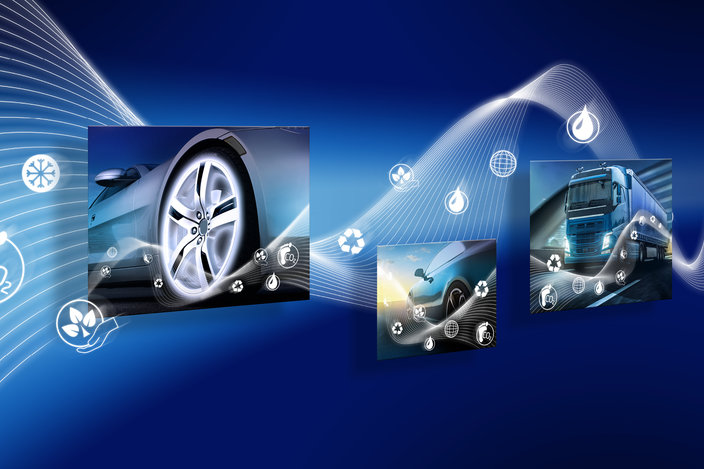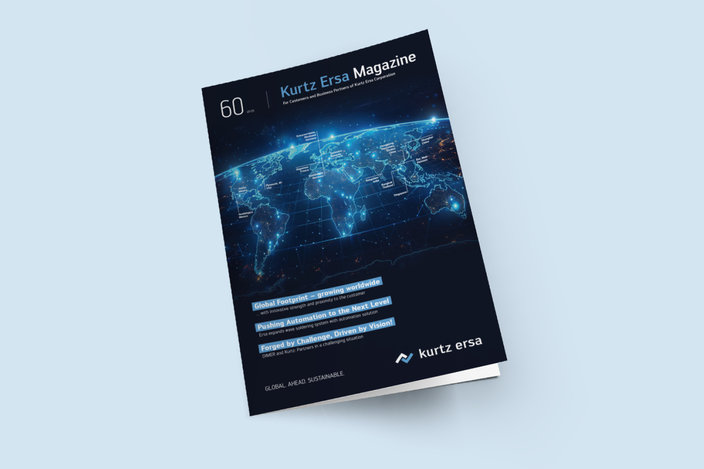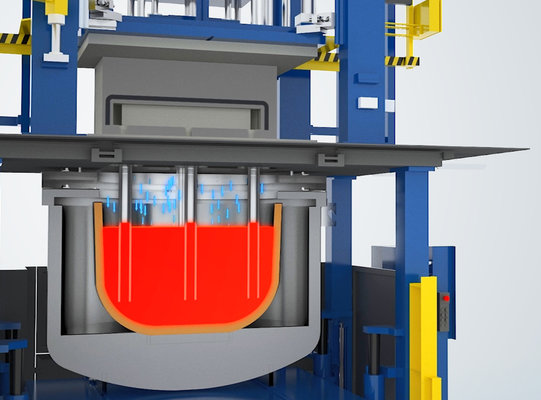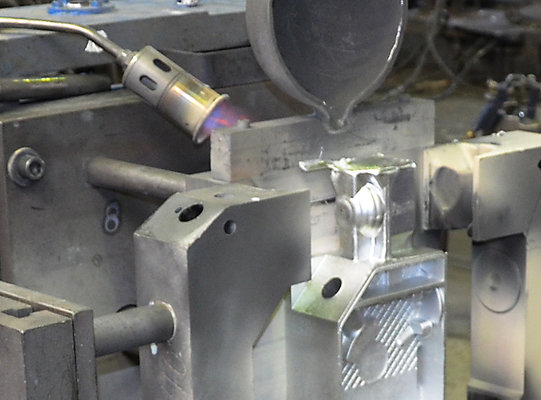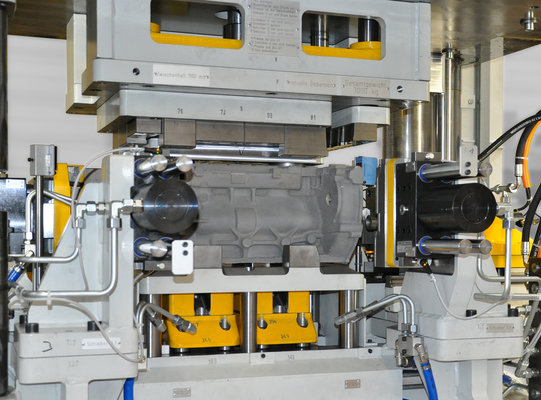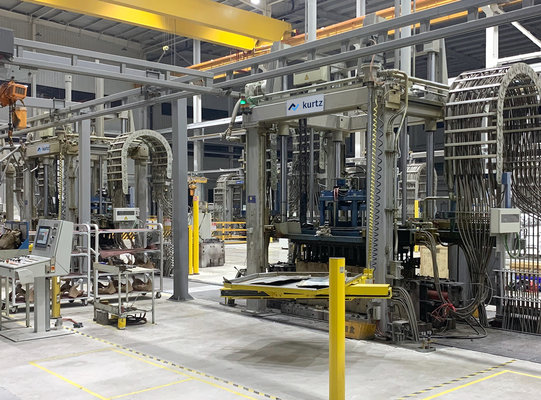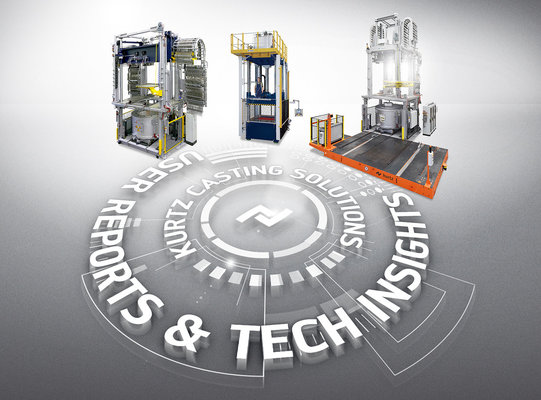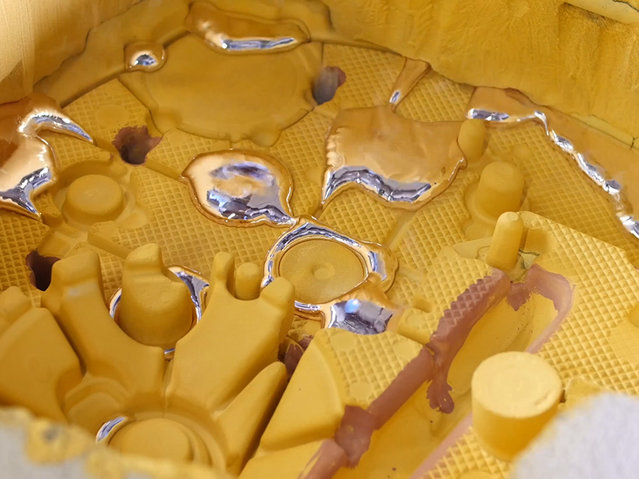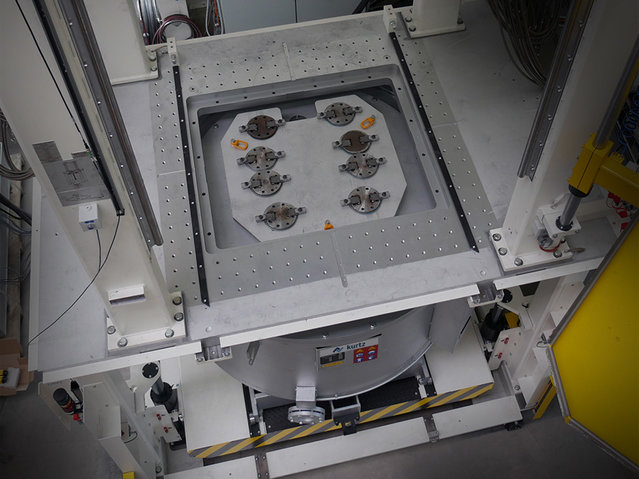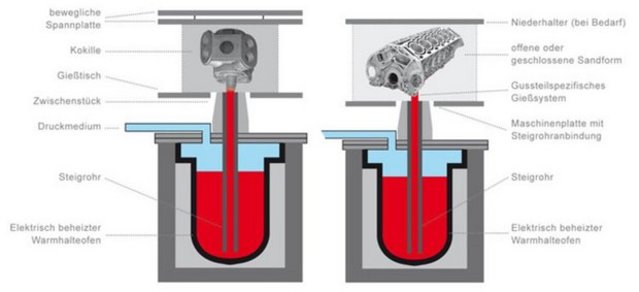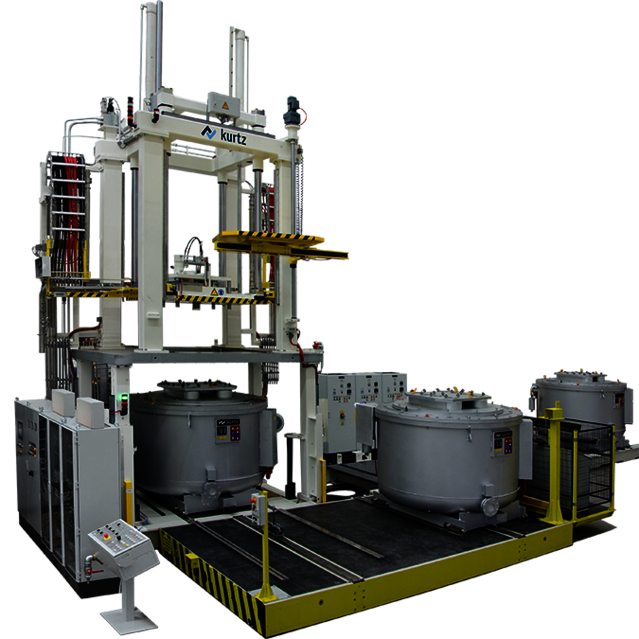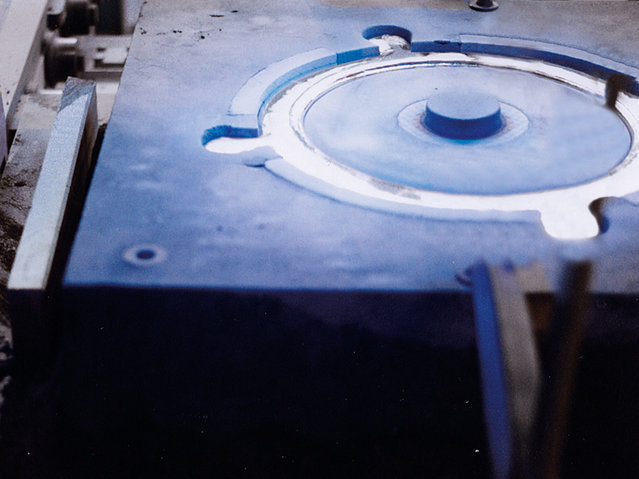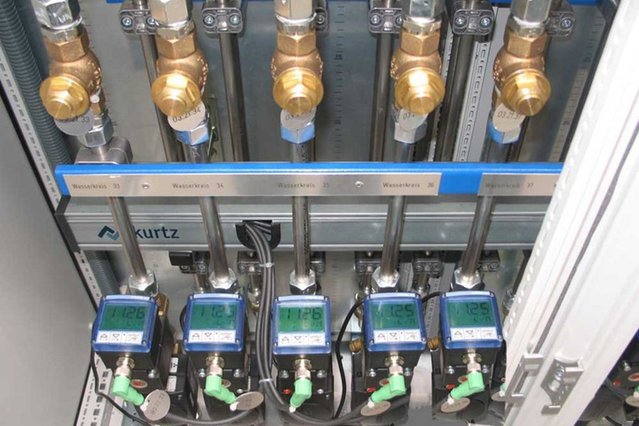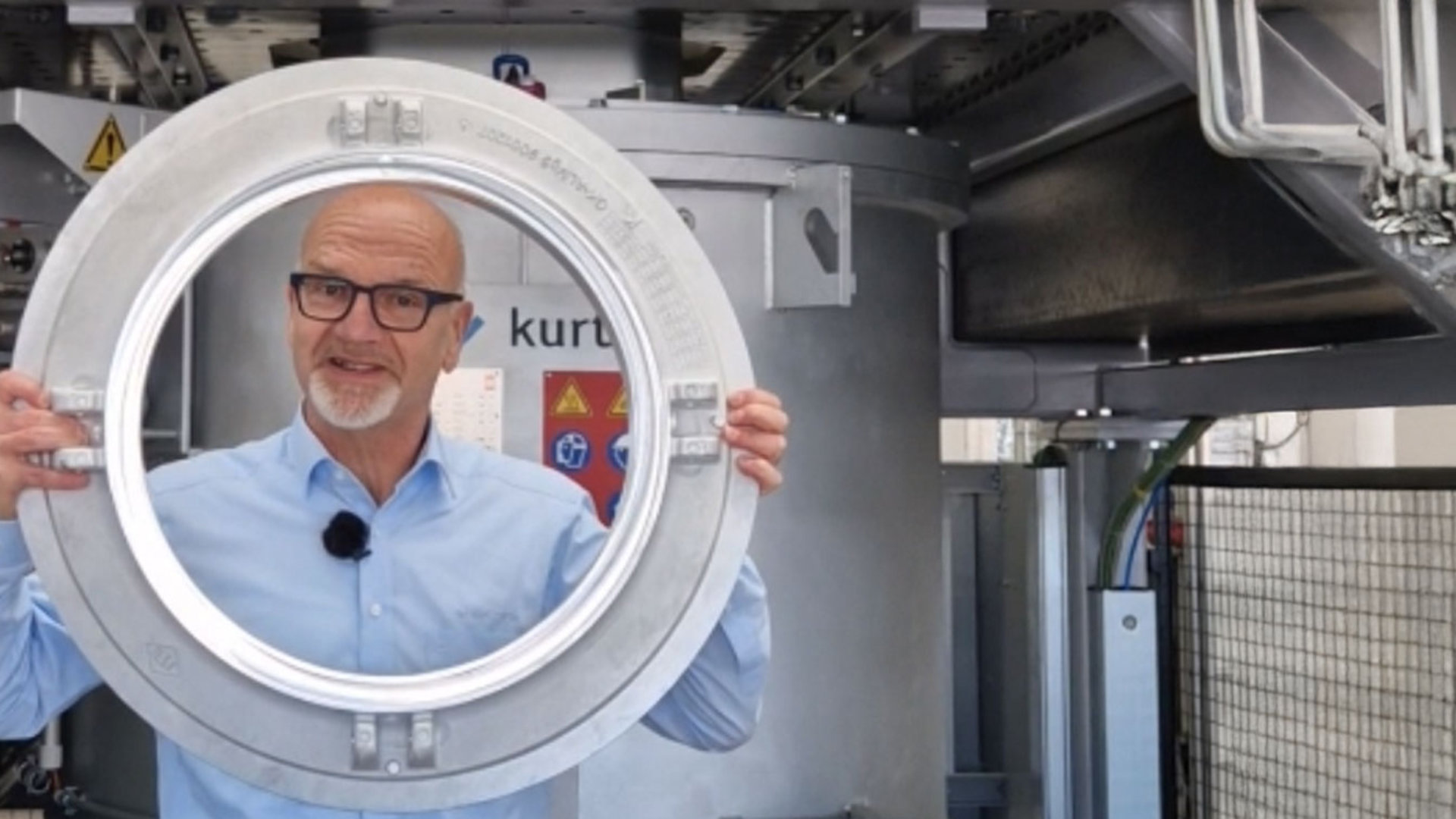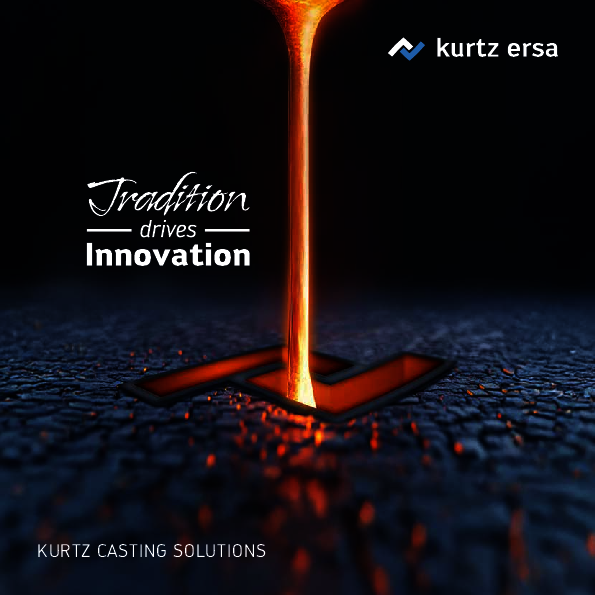The automotive industry is characterized by high innovation pressure, enormous technological demands and an extremely dynamic market. With a view to lightweight construction, numerous chassis and structural parts made of aluminum come into play. Hardly surprising, since aluminum is the most commonly used lightweight metal with outstanding mechanical properties and high weight-specific energy absorption capacity.
Low Pressure Casting for High Quality and Efficiency Low Pressure Casting Technology
Top results with sand and permanent mold casting machines
The low pressure casting process is predestined across the board for implementing extremely high quality requirements. Production by low pressure casting is ideal when highly stressed components with a particularly fine microstructure, very good mechanical properties and degrees of freedom in design are required. By applying minimal pressure to the furnace, the molten aluminum is filled into the mold via the riser tube. The controlled, uniform pressure increase slowly fills the mold cavity - and prevents the formation of oxide skins, the occurrence of cold runs and the risk of air inclusions.
Innovative sprue box for more flexibility
During the entire solidification phase, the furnace pressure remains constant and ensures reliable sealing of the castings. The ideal of directional solidification is achieved through casting technology measures and the targeted use of die cooling. With its innovative sprue box, Kurtz offers unprecedented flexibility in the gating and feeding of parts by the low pressure casting process - free from the geometry of the casting to be produced and without additional heat input. Since the number of sprues and risers is not limited here, many smaller locally effective cross-sections can be used. The use of one or more risers is also still proven.
Another advantage of low pressure casting is the reduction in the amount of circuit material. This can be impressively demonstrated using the example of a compressor housing. With low pressure casting, significantly lower costs can be expected for fettling, reworking and remelting of circuit material.
Low pressure casting for sand packs/metal molds
With the Kurtz sprue box, you gain unprecedented flexibility in gating and feeding parts by the low pressure casting process - independent of the geometry of the casting to be produced and without additional heat input. Without limiting the number of sprues and risers, many smaller locally effective cross-sections can be used. The use of one or more risers also remains proven.
Significant reduction in cycle material
Another advantage of low pressure casting is the reduction of the circuit material. This can be impressively demonstrated using the example of a compressor housing. With low pressure casting, significantly lower costs can be expected for fettling, reworking and remelting of cycle material. In addition, output is generally increased because the process is more reproducible and less dependent on external influences. Regardless of whether a classic, rather rotationally symmetrical part or components requiring a more complex gating system are to be cast - Kurtz always offers the right solution for low pressure casting!
Process comparison: gravity casting + low pressure casting
In a direct process comparison between gravity casting and low pressure casting, clear advantages for the Kurtz low pressure casting technology become visible in the example of a compressor housing. You too can benefit from this - we will be happy to advise you!
Advantages of the Kurtz low pressure technology:
- Greatly reduced cycle material
- Significantly lower costs for fettling, reworking and remelting of circuit material
- Increase of output (better reproducible, less dependent on external influences)
- Enormous flexibility in gating and feeding of parts
Highlights Niederdruckguss-Technologie
Intelligent Furnace Exchange Systems
Intelligent Furnace Exchange Systems
Kurtz shuttle systems for furnaces from 300 to 3,300 kg capacity
Maximum availability is ensured by the intelligent Kurtz furnace shuttle systems, which significantly reduce non-productive time and scrap. And best of all: In addition to the best casting quality, a considerable energy reduction is achieved with the help of the Kurtz systems.
Best melt quality for demanding castings
The use of aluminum for safety-relevant parts and heavily stressed components places higher demands on the melt quality. Kurtz solves these with various exchange furnace concepts. In addition to solutions with rotary tables, Kurtz also offers casting lines with rail-mounted furnace change concepts. This ensures high-quality melt with extremely fast furnace change times and reduces the start-up scrap after the furnace change to a minimum. Compared to solutions already available on the market, the Kurtz concepts impress with their consistent engineering and high availability. The careful coordination of all components already in the development and planning process is a central part of our efforts to make the production process of our customers more profitable.
Pressure Control
Pressure Control
The low pressure casting process is predestined for implementing the highest quality requirements. In this process, the furnace is pressurized, with the liquid aluminum entering the mold via the riser tube. The prerequisite for this is a controlled, uniform increase in pressure in order to achieve uniform filling of the mold.
Pressure control with proportional valve technology
Kurtz pressure control prevents pressure fluctuations that would otherwise cause the metal column to oscillate in the mold. This in turn leads to inclusions of rim flakes in workpieces, to the formation of cold runs and is thus synonymous with scrap. Furthermore, in closed molds, jumps when changing the rate of pressure rise during the filling process are usually not visible and thus unknown. The Kurtz low pressure control offers the solution here.
Pressure control with proportional valve technology provides smooth transitions at different rise speeds. It is precisely these different mold filling speeds that are required for optimum casting of components with different wall thicknesses. The influence of different pressures during mold filling is particularly evident in low pressure casting in open molds: In contrast to closed molds, which generate a counterpressure during mold filling due to different venting conditions, the metal level is open when casting in core packages and reacts to even the smallest changes in pressure. This significantly improves the quality of the casting process. The real-time visualization of all process parameters via LCD display, permanent process data recording and thus ISO-compliant reproducibility round off the conclusive overall concept.
Die Cooling
Die Cooling
Process-optimized mold cooling not only ensures controlled solidification, but also increased productivity by reducing cycle times. Kurtz media cabinet cooling ensures controlled and thus optimal solidification of the castings. Thus, in addition to excellent casting quality, you also achieve increased productivity through shorter cycle times.
Reproducible setting of the cooling conditions
Cooling is achieved by means of water, air or a water-air mixture. The cooling circuits are controlled by time, mold temperature or a combination of both. Reproducible setting of the cooling conditions is ensured by the selection of high-quality components. The operating personnel are informed about all current process parameters on the monitor - at the same time, the data is collected on a cycle-related basis and is available at any time for subsequent quality evaluation.
